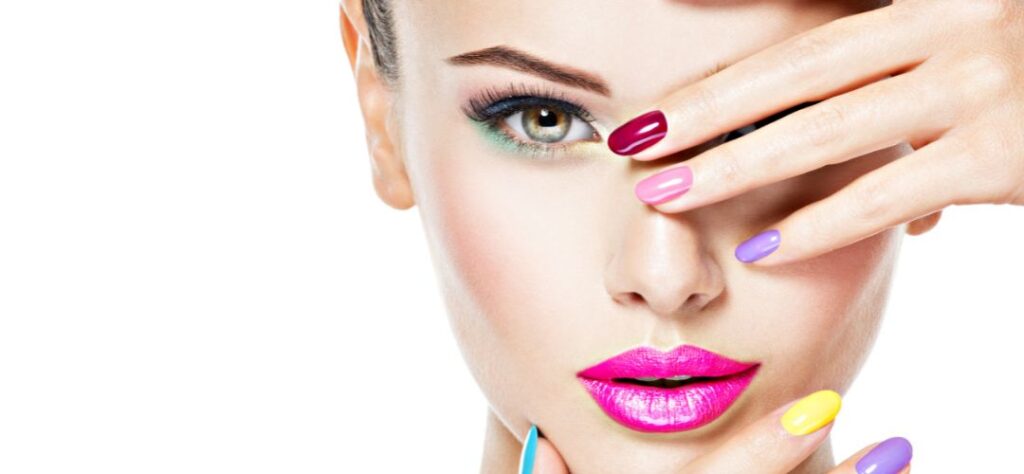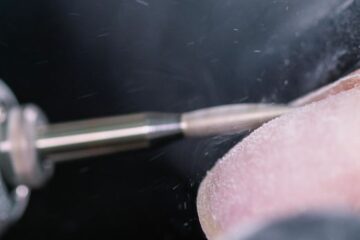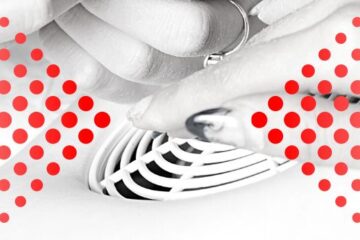what is base gel for nails? | It’s a question we’re sure many of us have asked ourselves at some point in our lives. If you’ve ever found yourself staring at your nails, unsure of whether or not to invest in this special nail treatment – then this article is for you! Today, we’ll be exploring what base gel for nails actually is and why it might just be worth your time and money. Let’s get started!
What is base gel used for on nails?
Simply put, base gel is used as a foundation for nail polish. It’s designed to protect your nails, When you apply the base gel, it creates a layer of protection between your actual nail and whatever product you’ll be putting on top. In addition to providing protection, base gel also helps your manicure last longer and look more professional.
What’s the difference between base gel and top gel?
Base gel and top gel are both types of nail products, but the difference between them lies in their purpose. Base gel is applied first to create a layer of protection for your nails, while top gel is used to add an additional layer of shine and color. While both products are designed to protect your nails, it’s important to note that base gel does not provide the same level of shine or color as top gel.

Is primer and base gel the same?
No, primer and base gel are not the same. Primer is a product used to prepare your nails for color or other treatments, while base gel is applied after primer to provide an additional layer of protection. Both products are necessary for a professional-looking manicure, but they have different uses and effects on your nails.
Is base gel the same as builder gel?
No, base gel and builder gel are not the same. Base gel is designed to provide a layer of protection for your nails before you apply color or other treatments, while builder gel is used to create nail extensions or sculptures. Builder gel is thicker than base gel, and it’s applied in multiple layers to achieve the desired shape or look.
How to apply base gel?
Applying base gel is an important part of any manicure, and it’s not as difficult as you might think. First, make sure your nails are clean and free of any debris. Then, apply a thin layer of the base gel over each nail, starting at the cuticle and working your way outwards. Make sure to cover the whole nail, including the sides and tip. Once you’ve applied the base gel, let it dry for a few minutes before adding any color or treatments to your nails.
How long does base gel last?
Base gel usually lasts for up to two weeks if properly maintained. Additionally, try not to pick at the base gel as this can weaken its protective layer over time.
How to remove base gel?
Start by cutting off any excess parts of the base gel with a manicure scissors. Then, pour some acetone-free nail polish remover onto a cotton pad and press it gently against your nails for 15 to 20 seconds. Once you’ve finished removing the base gel, wash your hands with soap and water.
For a more effective base gel removal process, you can use an electric nail file to gently buff away the product. Start with a low speed setting and gradually increase it until you have removed all of the base gel. This method is much less harsh on your nails than using an acetone-based remover, and it can help you achieve a smoother, more polished look.
Is base gel vegan friendly?
Yes, base gel is vegan friendly. Many brands of base gel are made with plant-based ingredients that make it safe for vegans to use on their nails without any worry about animal products being used in the manufacturing process. Some of these ingredients may include natural oils and waxes like jojoba and carnauba, as well as vegetable glycerin and guar gum.
What materials are used for base gel?
Base gel is a type of nail product that provides an extra layer of protection to your natural nails before you apply color or other treatments. It’s made up of several different materials, each chosen for its unique properties and benefits.
The base coat of base gel typically contains polyvinyl alcohol (PVA), which gives the product its adhesiveness. This helps the gel to stick tightly to the nails, forming a strong and durable base for other products to be applied on top.
Other materials that may be used in base gels include acrylates and methacrylates, which provide flexibility and durability; mineral oils, which are known for their moisturizing and protective properties; and silicone resins, which help to make the product water-resistant.
Some base gels also contain natural ingredients like vitamin E, jojoba wax, or carnauba wax. These ingredients help to nourish and hydrate the nails, as well as provide additional protection against UV rays and other environmental stressors.
Does base gel strengthen nails?
Yes, base gel does strengthen nails. Base gels are specially formulated to form a protective layer over the nails.
Can you use regular polish with base gel?
Yes, you can use regular polish with base gel. Base gels are designed to be used as a protective layer on the nails before applying any other type of nail polish or treatment. This helps to create a smooth and even surface for your other products to stick onto and provides an extra layer.
How to store and keep base gel fresh?
The most important thing you can do to keep your base gel fresh and prevent it from becoming unusable is to store it correctly. This includes keeping it in a cool, dry place away from direct sunlight and other sources of heat. If the product has been opened, make sure the lid is tightly closed to prevent air exposure.
Storing your base gel in a refrigerator is also an option, although this should only be done if you are not using the product for an extended period of time. This is because cold temperatures can cause the product to become brittle and harden, making it difficult to apply.
Can you reuse leftover base gels?
Reusing leftover base gels is a great way to save money and reduce waste. While it’s not ideal for every situation, reusing base gel can be an effective method for those looking to get the most out of their product.
When it comes to reusing base gels, the most important thing is to ensure that the product remains in good condition.
Is there a difference between cheap and expensive base gels?
When it comes to base gels, there is definitely a difference between cheap and expensive options. Cheap base gels can contain low-quality ingredients like mineral oils and silicone resins that are known for their ability to quickly break down and become ineffective.
Expensive base gels, on the other hand, may be made with higher quality ingredients such as vitamin E, jojoba wax, and carnauba wax. These ingredients help to nourish and hydrate the nails, as well as provide additional protection against UV rays and other environmental stressors.
When it comes to curing your base gel under a UV or LED light, cheap options may take longer to cure than higher quality base gels. This is because lower quality products may not be able to absorb the light as quickly, meaning it takes longer for them to harden and form an even layer over your nails.
Ultimately, when it comes to base gels, you get what you pay for. If you’re looking for a product that will provide long-lasting results and top-notch protection, then spending a bit more on your base gel is definitely worth it in the end.

Are there different types of base gels?
Yes, there are different types of base gels available for you to choose from depending on your needs. Generally speaking, there are two main categories: water-based and solvent-based gels.
Water-based gels are the most popular choice among nail techs because they provide excellent adhesion and durability. They also tend to be less harsh on the skin and can even help to promote healthy nail growth. The downside is that they take much longer to cure than solvent-based gels, typically up to 10 minutes or more.
Solvent-based gels are great for those who want a quick application with maximum strength and durability. They’re also known to be less expensive than water-based gels, making them a great option for those on a budget.
What colors can be used with base gels?
When it comes to using base gels, the color possibilities are virtually endless! From classic neutrals such as beige and taupe, to vibrant hues such as blues and purples, there’s no shortage of shades that can be used with base gels. Not only are they great for creating subtle yet stylish manicures, but they can also be used to create more daring, bold looks.
When choosing the perfect shade of base gel for your manicure, it’s important to consider both the color of your natural nails and the hues you plan on using for the final look. For example, if you have fair skin and light colored nails, then a pale pink or nude shade may be the best option for you. On the other hand, deeper skin tones and darker manicures can really benefit from deeper shades such as navy, maroon or even black.
If you’re feeling adventurous and want to create something truly unique, then you can always mix and match colors to create a truly unique look. For instance, using a white base with bright yellow tips is sure to make a bold statement! Or, if you’re looking to keep things simple and classic, then pairing shades such as beige with pale pink or light blue can create a timeless look.
Is there a way to make the base gel last longer?
Yes, there are a few ways to ensure that your base gel lasts as long as possible. For starters, it’s important to properly prep the nails before applying the base gel. This includes cleaning and filing the nails and removing any oils or dirt from the surface. Doing this will help create a better surface for adhesion and help the base gel to last longer.
Conclusion | what is base gel for nails?
This article discussed the different types of base gels available, including water-based and solvent-based, as well as their pros and cons. It also gave color recommendations for different skin tones and suggested mixing colors to create unique looks. Finally, it offered tips on how to ensure that your base gel lasts by prepping the nails beforehand. Ultimately, base gels are a great way to create stylish and long-lasting manicures.


